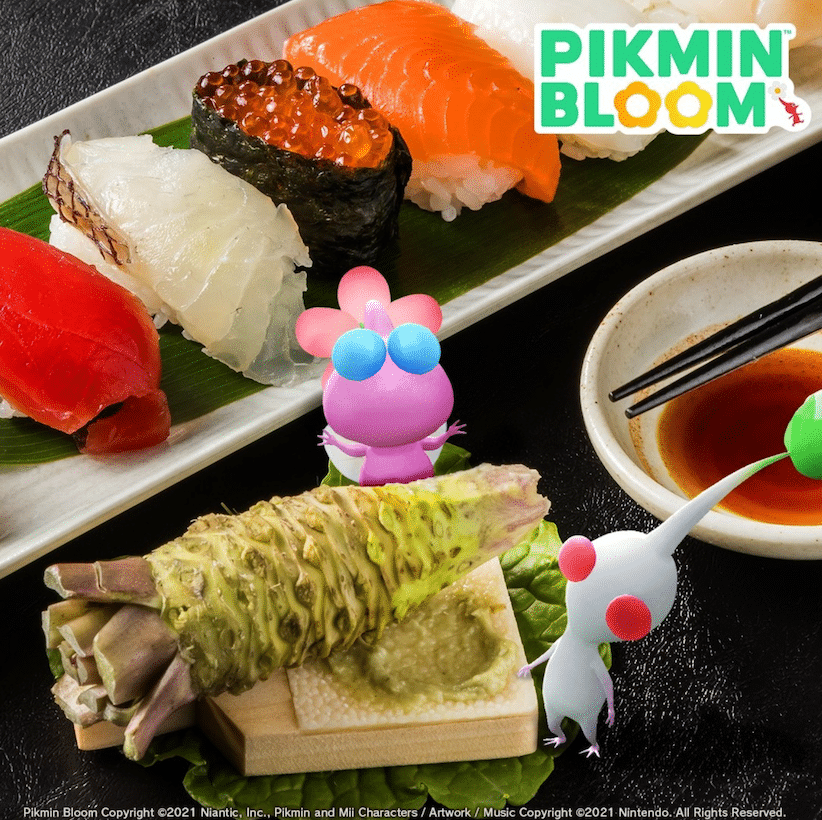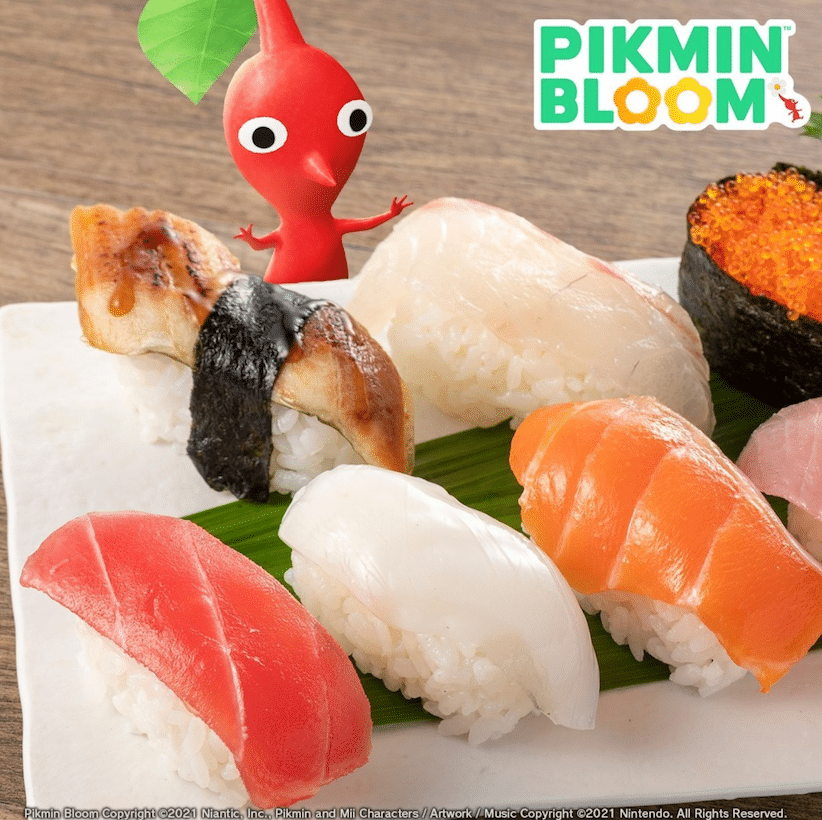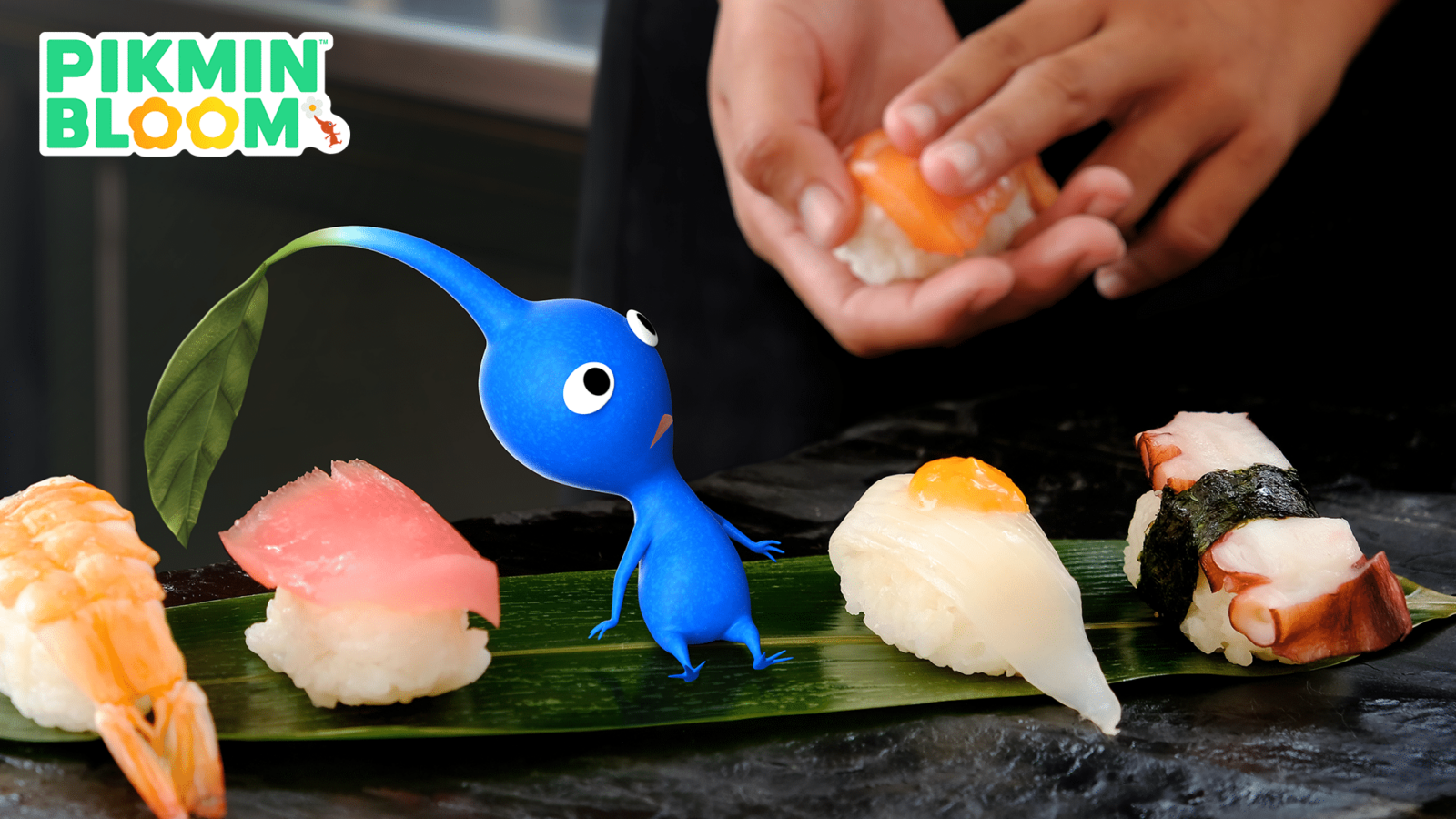Near the Sushi restaurants it will now be possible to find the new Pikmin, in homage to Japanese culture.
Let’s go eat Sushi armed with Pikmin
Throughout April it will be possible to meet, at the restaurants, the new Sushi decorated Pikmin visible thanks to the augmented reality of Pikmin Bloom. This is a Niantic initiative dedicated to Japanese culture and its millenary culinary tradition. In this regard, the videogame publisher also offers us five interesting curiosities about the famous dish that, from Japan, has conquered the hearts and palates of us Westerners. Let’s find out all:
1. Sushi used to be three times the size
Nigiri sushi is said to have originated in Japan during the second half of the Edo period, early 1800s.
At the time, it was a trendy street food, sold alongside tempura and soba in food kiosks. The types were mostly limited to what could be fished in Edo Bay (now Tokyo Bay), such as shrimp, eel, and squid. Plus, the rolls were two to three times bigger then!
2. Not all sushi originated in Japan!
Even though it was invented in Japan, sushi has become very popular around the world. This has led to new overseas creations, such as California rolls, made with avocado, and spider rolls, with soft-shelled crab. Some places also serve sushi with fruit, such as strawberries, mangoes, and more!
3. Becoming a sushi chef can take up to a decade
Becoming a professional sushi chef isn’t easy. Professional sushi chefs, known as “itamae” in Japan, must not only make sushi, but also entertain guests and calculate the bill at the end of the meal.
Mastering the art of making beautiful nigiris doesn’t just put together rice, seaweed, and fish. Every step matters, and this is usually reflected in the type of training sushi chefs undergo, who typically start at the bottom and work their way up their careers over years of practice.


4. There are special terms for green tea, soy sauce, ginger and other elements that are only used in sushi restaurants!
You walk into a Japanese sushi restaurant and suddenly the rice is called “shari”, green tea is “agari”, soy sauce “murasaki” and ginger “gari”. These terms are different from the usual Japanese terms and can confuse even native speakers!
“Murasaki”, for example, comes from the Japanese word for “purple”. A long time ago, soy sauce had a dark red color. It was also quite expensive. And because purple was seen as a high-class or noble color, soy sauce was called “murasaki”.
5. Wasabi is for more than just setting your mouth on fire!
No sushi roll is complete without wasabi. And while many only appreciate it for its spiciness, it can also help cover up the fishy smell of sushi. It is also said to have antibacterial effects which help ensure that the fish are clean.
Most people are familiar with wasabi, but what many don’t realize is that there are two distinct types of it! There is wasabi we associate with sushi, made from the Japanese wasabi plant, but there is also a Western variant, often made of horseradish. Both wasabi and horseradish are members of the Brassicaceae family, but they are quite distinct: wasabi has a dark green color and is used most often for sushi, while horseradish wasabi is white in color and is sometimes eaten with roast. beef. Small amounts of both produce that characteristic wasabi tingling sensation in the nose.













Leave a Reply
View Comments